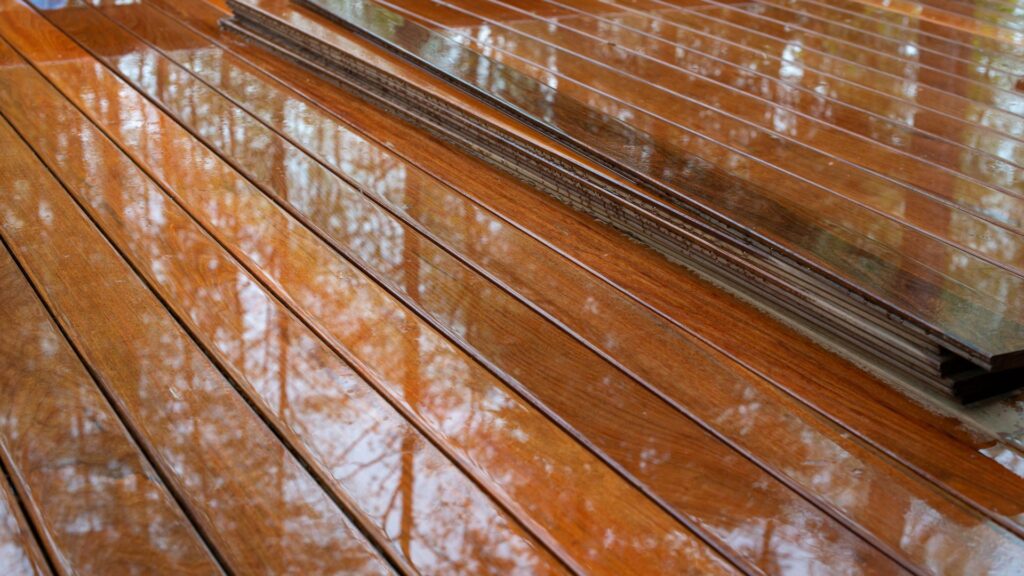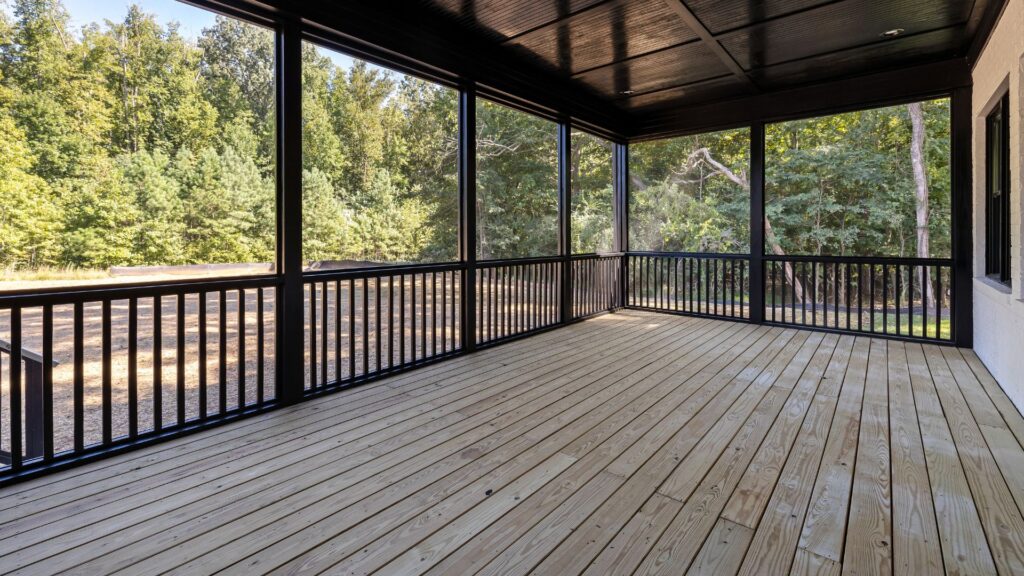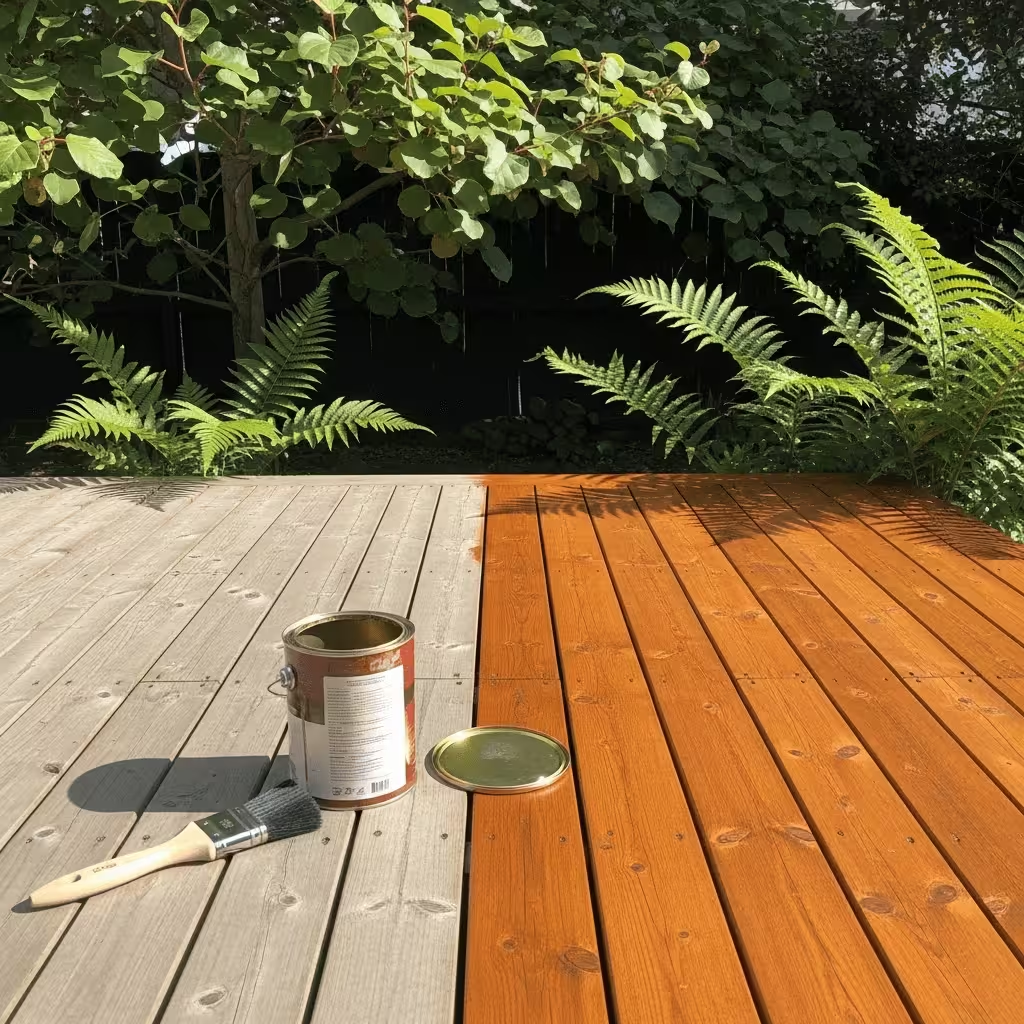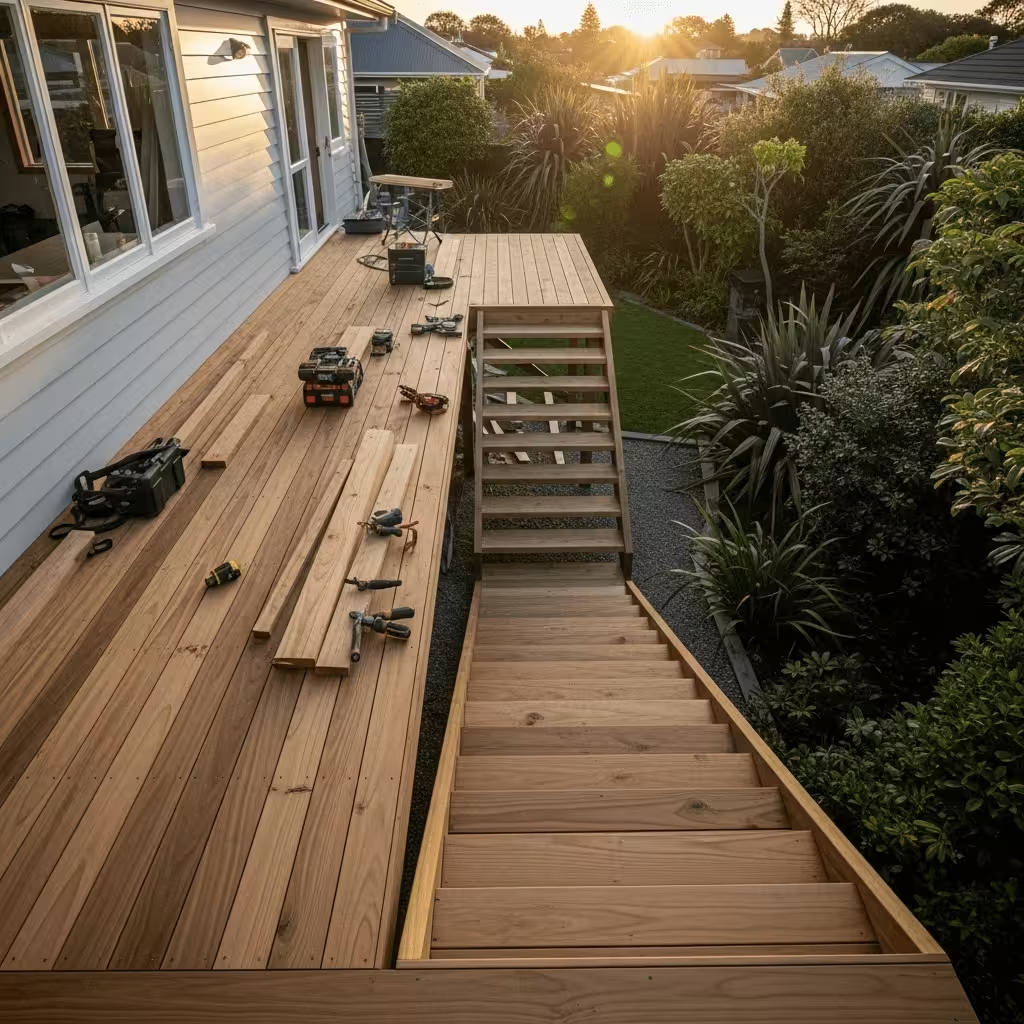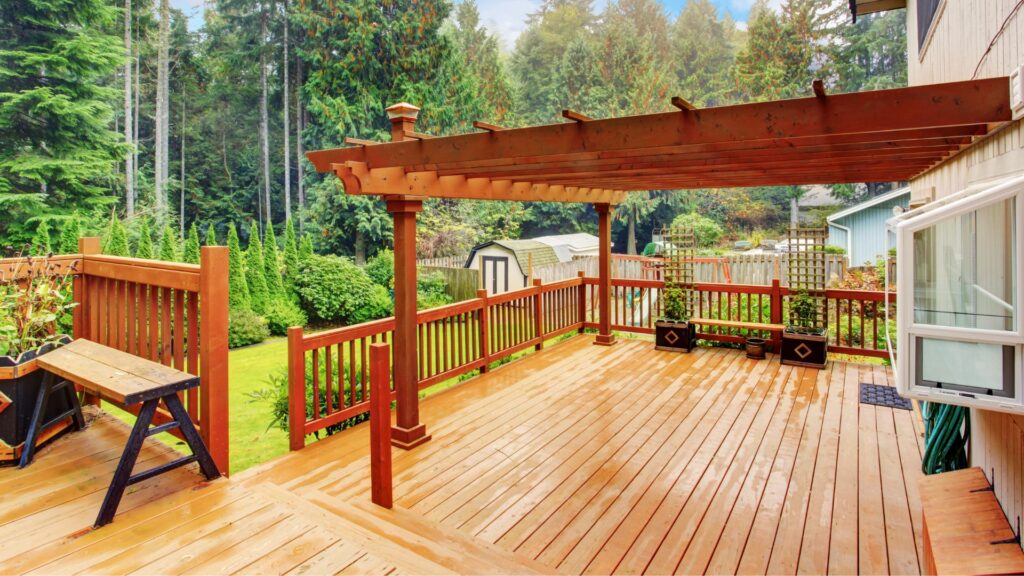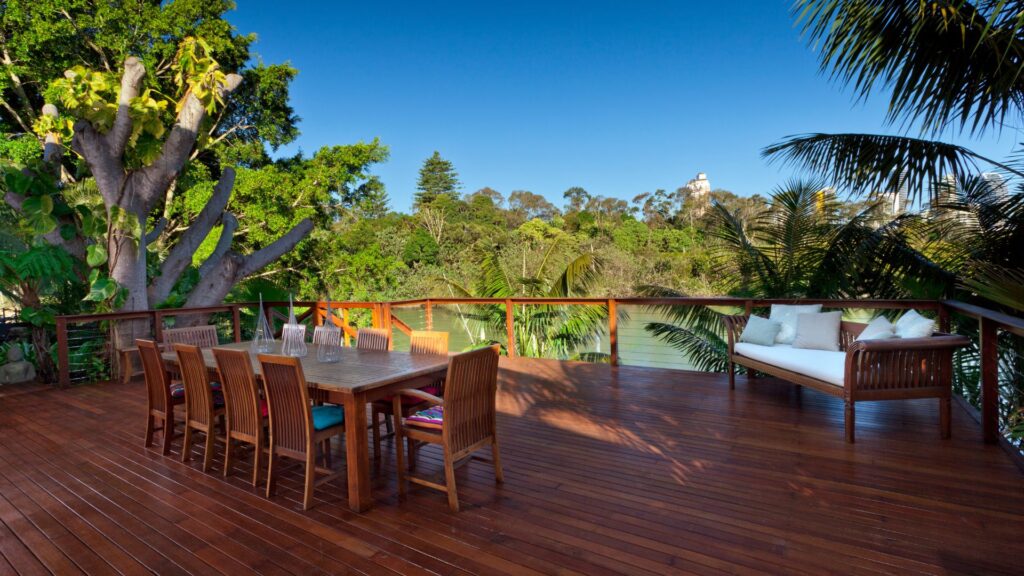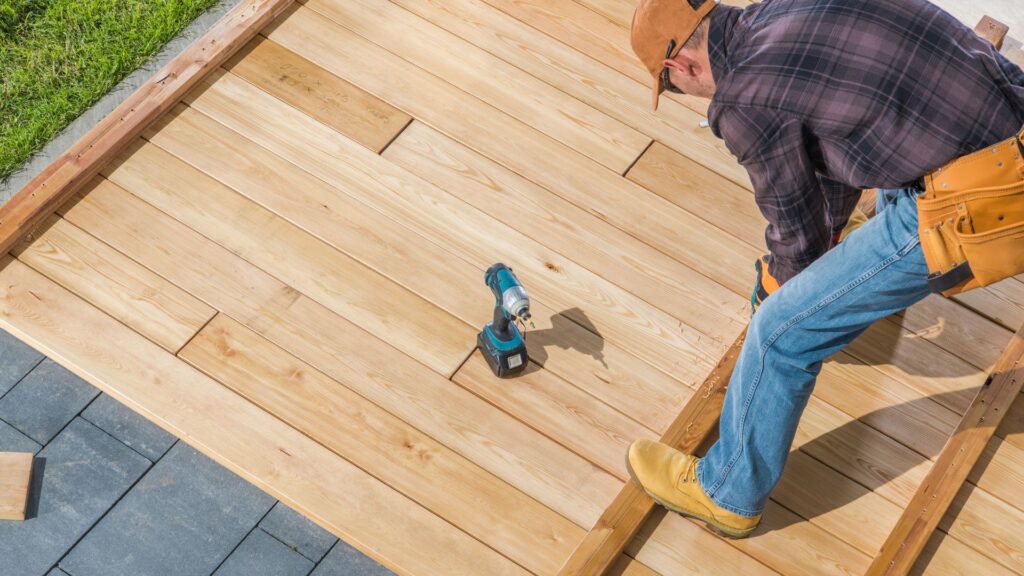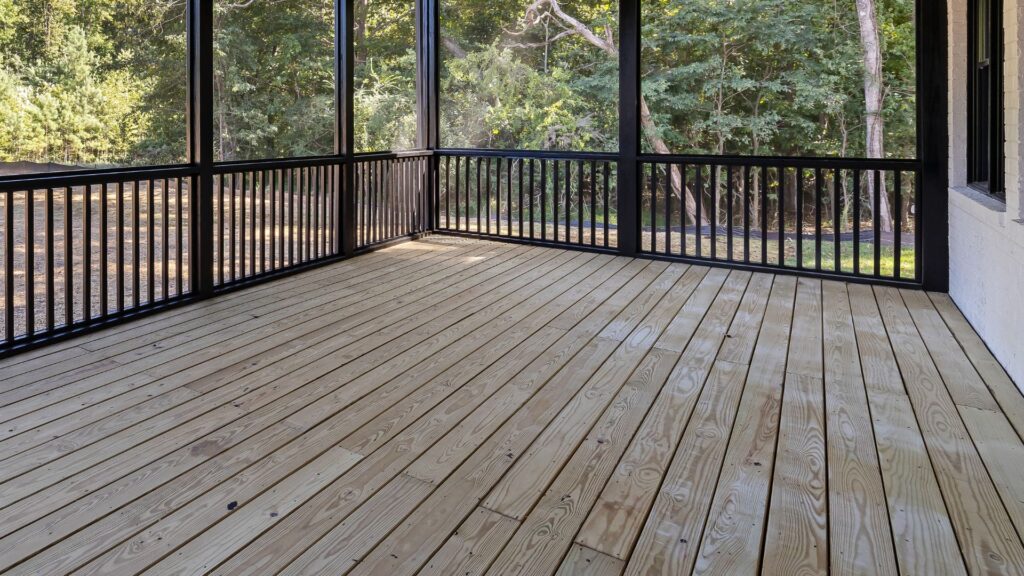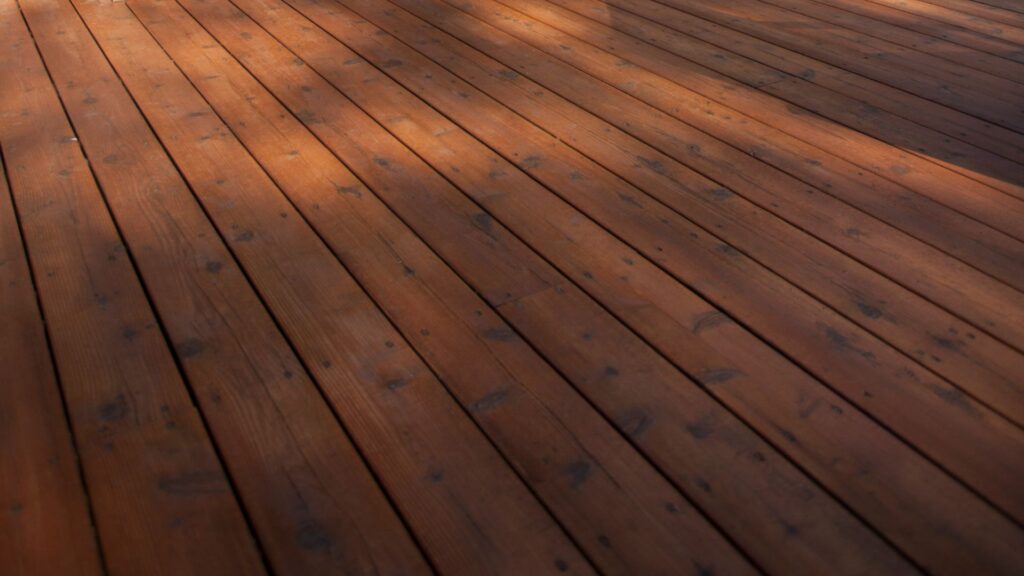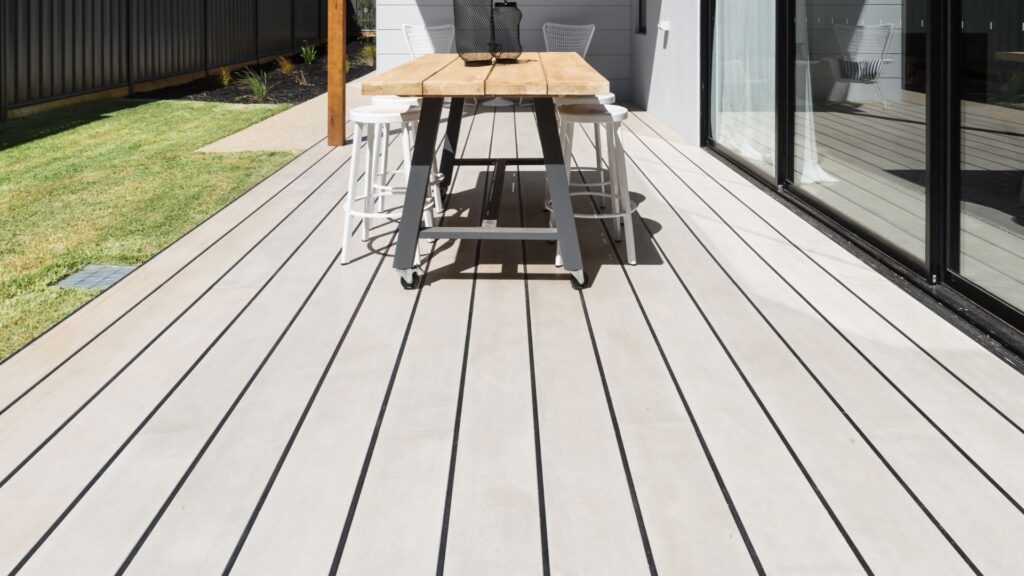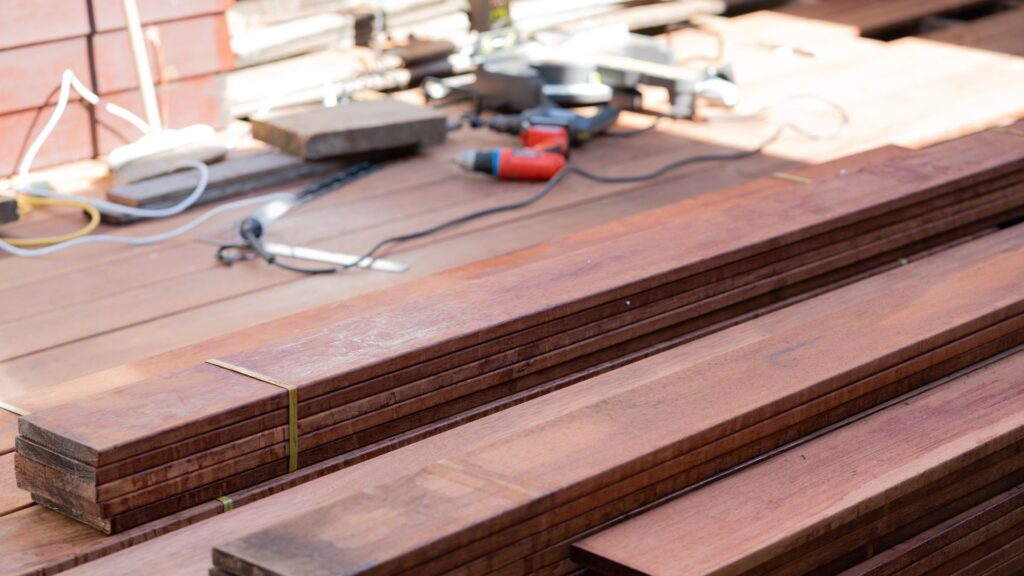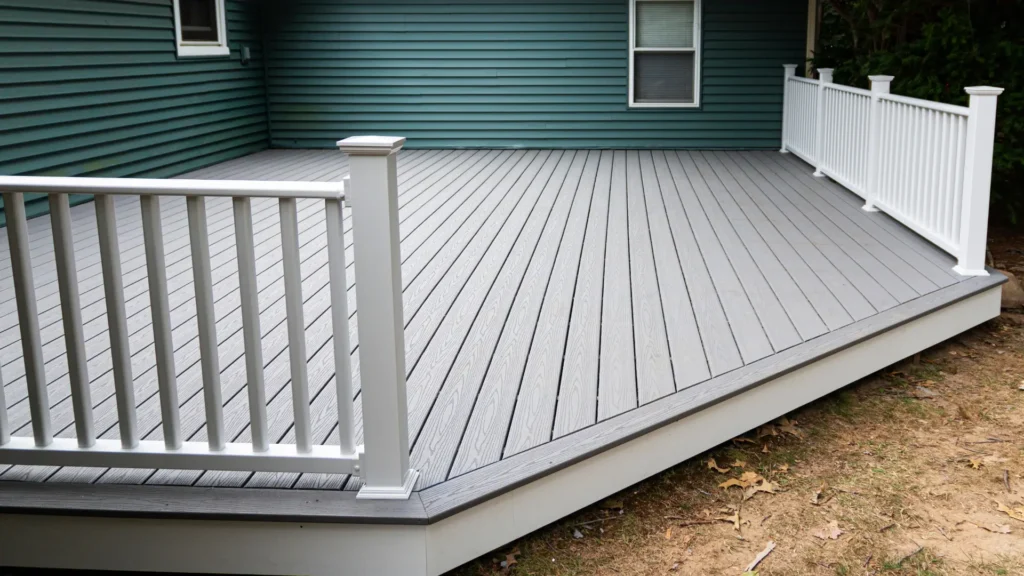Welcome to your go-to guide for decking timber in NZ, where we break down everything you need to know to build the perfect deck for your home. A well-chosen deck can transform your outdoor space into a place for family barbecues, quiet coffee mornings, or summer get-togethers, but the secret to a long-lasting and great-looking deck starts with choosing the right timber. With New Zealand’s unique climate—sunny summers, wet winters, and coastal conditions—it’s not just about picking what looks good; it’s about finding a timber that can handle the elements, match your style, and fit your budget. In this guide, you’ll learn about the most popular decking timbers in NZ, how much they cost, the pros and cons of each type, and tips to keep your deck looking its best for years to come. Whether you’re planning a DIY build or hiring a professional, this guide will help you make smart, informed decisions for a deck that’s built to last.
Decking timber in NZ comes in popular options like pine, kwila, vitex, and macrocarpa. Pine is affordable and treated for durability, while kwila offers a rich, premium look. Vitex is a sustainable mid-range choice, and macrocarpa is chemical-free and ideal for eco-friendly builds. The best timber depends on your budget, style, and maintenance needs.
Table of Contents
Why Decking Timber Is Popular In NZ
New Zealanders have a deep love for the outdoors, and this passion is reflected in the way homes are designed. A deck is more than just an extension of the house; it’s a space where families gather for weekend barbecues, kids play in the fresh air, and friends catch up over summer evenings. The Kiwi lifestyle naturally revolves around outdoor living, and timber decking has become the go-to choice for creating those inviting spaces that connect the indoors to the beauty of the backyard.
The value a deck adds to a home is another reason for its popularity. A well-built timber deck doesn’t just look great; it increases your property’s usability and appeal. Whether it’s a modest platform for a small garden or a spacious area for entertaining, a deck makes your home more functional. Potential buyers also see the benefit, which often translates to a higher resale value.
Timber decks also stand out because of their many advantages over other materials. Timber has a natural, timeless look that blends beautifully with New Zealand landscapes, whether your home is in the city, by the coast, or surrounded by native bush. It’s also versatile and can be stained or painted to match your personal style. When maintained properly, timber decking is durable and can last for decades, making it a smart long-term investment. Unlike some synthetic materials, timber feels cooler underfoot during hot summers, adding to the comfort and enjoyment of your outdoor space.
A timber deck is more than just a feature; it’s part of the Kiwi way of life. It enhances how you live, adds tangible value to your property, and provides a sustainable, natural option that never goes out of style.
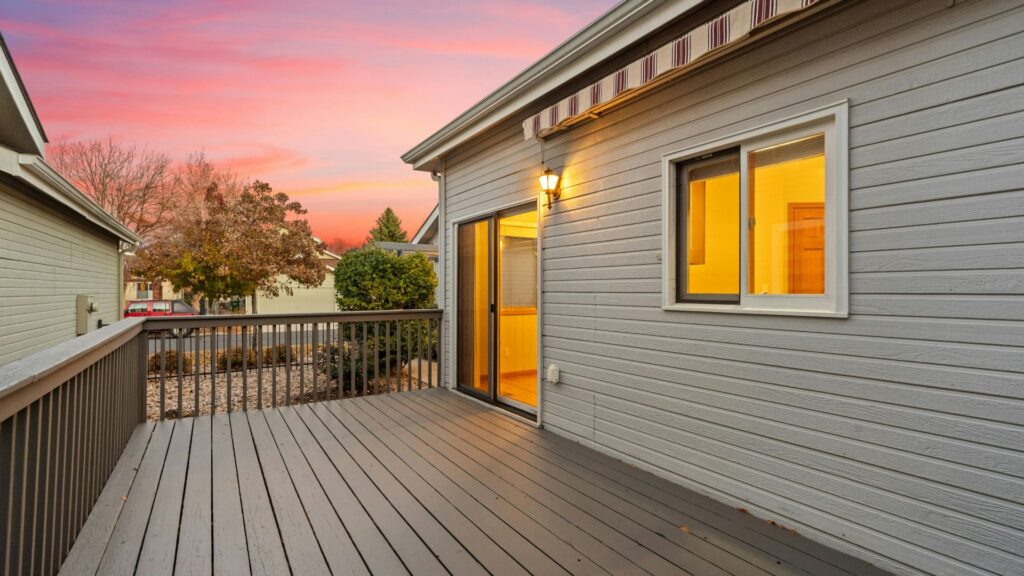
Popular Types Of Decking Timber In NZ
When building a deck in New Zealand, choosing the right timber is crucial. Each type of timber offers different benefits, costs, and maintenance needs. Below, we explore the most popular decking timbers available in NZ, along with their pros, cons, and ideal uses to help you make the right decision for your home.
Pine
Pine is the most widely used decking timber in New Zealand. It is pressure-treated to withstand rot, insects, and moisture, making it a reliable and affordable choice.
Pros:
- Budget-friendly and widely available
- Easy to cut, handle, and install
- Treated for durability and resistance to pests
Cons:
- Requires regular maintenance, such as staining or oiling
- Less durable than hardwoods in high-traffic areas
Best For: Homeowners who want a cost-effective deck for everyday use or DIY projects.
Kwila
Kwila is a premium hardwood that is popular for its rich reddish-brown colour and exceptional durability. It weathers beautifully over time and can last for decades with proper care.
Pros:
- Extremely durable and long-lasting
- Attractive natural colour and texture
- Suitable for high-traffic areas
Cons:
- More expensive than pine or other softwoods
- Can leach tannins, which may stain surrounding areas if not sealed properly
Best For: High-end decks or spaces that need a durable, visually striking finish.
Vitex
Vitex is a sustainable hardwood sourced from the Pacific region. It has a light brown tone that suits modern outdoor spaces and performs well in New Zealand’s changing weather conditions.
Pros:
- Environmentally friendly with certified sustainable sources
- Mid-range price, offering a balance of cost and durability
- Naturally resistant to moisture and pests
Cons:
- Requires regular oiling to maintain colour and prevent graying
- Availability can be limited in some regions
Best For: Homeowners seeking a balance between sustainability, performance, and aesthetics.
Macrocarpa
Macrocarpa is a locally grown softwood known for being naturally durable and free from chemical treatments. Its rustic appearance makes it a favourite for eco-conscious homeowners.
Pros:
- Chemical-free and environmentally friendly
- Unique, natural look
- Locally sourced and sustainable
Cons:
- Less durable than imported hardwoods
- Requires careful sealing and regular maintenance
Best For: Those who prefer natural materials and want a deck that blends seamlessly with native landscaping.
Other Options
Other popular decking materials include Jarrah, Garapa, and composite timber blends.
- Jarrah: A dense Australian hardwood with a deep red tone, offering excellent durability and a luxurious finish.
- Garapa: A golden-toned hardwood that is cost-effective and performs well in most conditions.
- Composite Blends: Made from a mix of wood fibers and recycled plastics, these are low-maintenance alternatives to natural timber.
Pros:
- Wide range of colours and styles
- Excellent durability, especially with composites
- Low maintenance for some options
Cons:
- Some hardwoods can be expensive
- Composite decking can lack the natural feel of timber
Best For: Homeowners seeking custom designs, low maintenance, or a unique look that stands out.
Choosing the right decking timber in NZ comes down to balancing your budget, style preferences, and maintenance expectations. Whether you prefer the affordability of pine, the premium look of kwila, the sustainability of vitex, or the natural appeal of macrocarpa, there’s an option to suit every home and lifestyle.
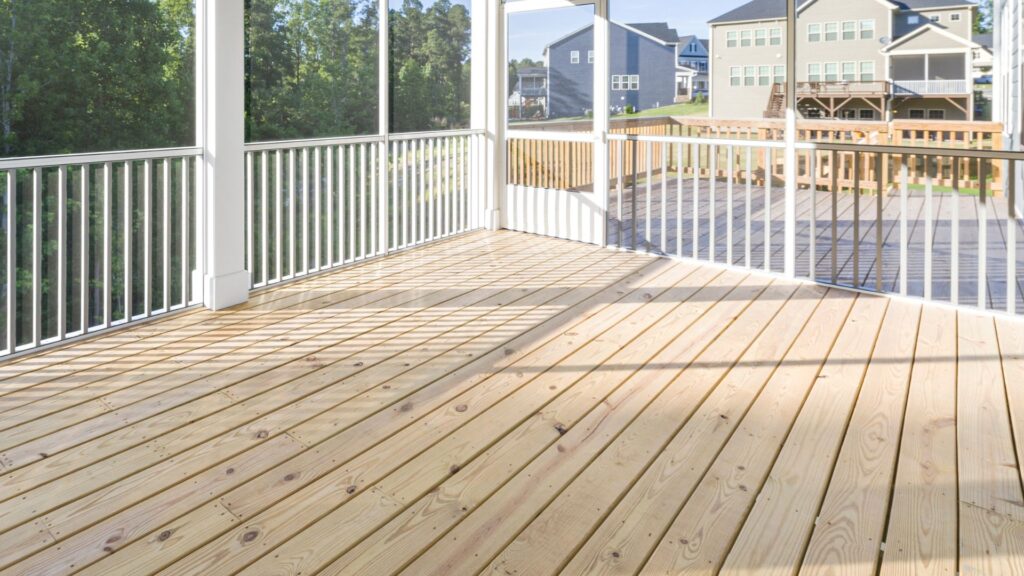
Cost Guide For Decking Timber In NZ
Building a deck is an investment, and understanding the cost of decking timber in NZ helps you plan better. Prices vary depending on the type of timber, its grade, the size of your deck, and the supplier you choose. Here’s what you need to know before making your decision.
Estimated Price Ranges By Timber Type
- Pine: The most budget-friendly option, starting around $30–$50 per square meter. It’s ideal for basic decks or large areas where cost is a priority.
- Kwila: Known for its rich color and durability, kwila usually costs $80–$120 per square meter. This is a premium choice for high-end decks.
- Vitex: A mid-range option priced between $70–$100 per square meter. It offers a balance of sustainability and durability.
- Macrocarpa: Expect to pay about $60–$90 per square meter. It’s a natural, chemical-free choice popular among eco-conscious homeowners.
- Other hardwoods (like Garapa or Jarrah): Prices can exceed $120 per square meter, often used for luxury decks.
Factors That Influence The Cost
- Timber grade: Higher-grade timber, with fewer knots and more consistent color, often costs more but looks better and lasts longer.
- Deck size: Larger decks need more materials, which increases the total cost, even if the per-square-meter rate stays the same.
- Supplier and location: Prices may differ between big retailers and specialty timber yards. In remote areas, transportation costs can also raise the price.
- Treatment and finishes: Pre-treated or pre-finished timber adds convenience but comes at a higher upfront cost.
Tips For Balancing Budget And Quality
- Compare multiple suppliers to find the best combination of price and quality.
- For tight budgets, consider using pine for the main deck area and premium timber for accents like steps or railings.
- Invest in proper maintenance from the start. A slightly higher upfront cost can save money in repairs and replacements over time.
- Ask about warranties or guarantees to ensure long-term value.
A well-planned budget ensures you get a deck that fits your financial limits without compromising on durability or style. By knowing your options and costs upfront, you can make smart choices that balance quality, performance, and price.
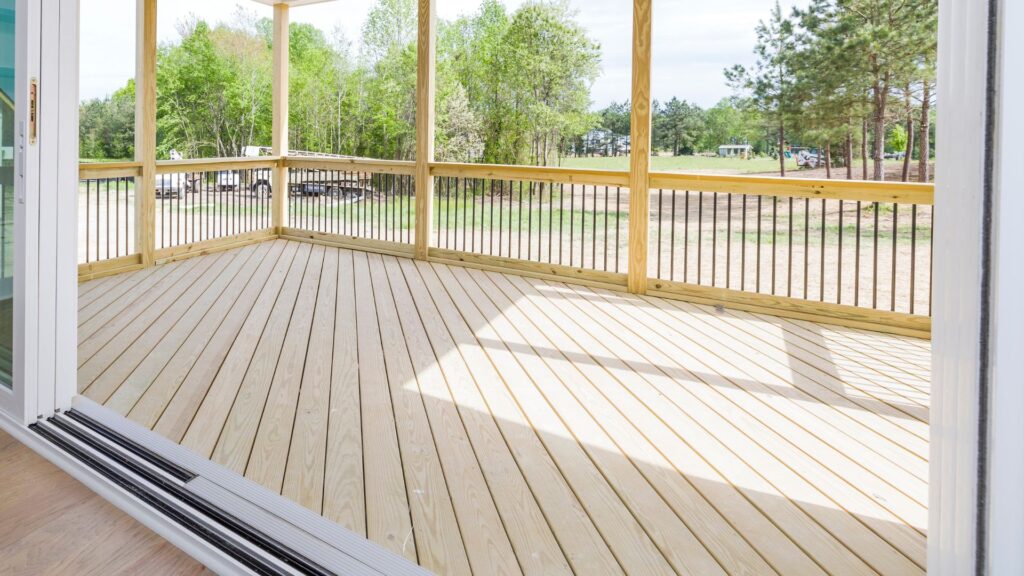
How To Choose The Right Timber
Choosing the right decking timber in NZ is more than just picking what looks good. The right timber ensures your deck lasts longer, stays safe, and matches your lifestyle. Here’s how to make the best choice:
Consider Your Climate
New Zealand’s climate varies a lot, and your location should guide your decision.
- For coastal areas: Choose durable options like kwila or vitex that can withstand salt, moisture, and humidity.
- For inland or dry regions: Treated pine or macrocarpa can perform well, offering good durability without the higher cost of hardwoods.
Match The Style Of Your Home
Your deck should complement the look of your house.
- Modern homes: Kwila or composite timber offers a sleek, premium finish.
- Traditional homes: Macrocarpa or treated pine provides a warm, natural vibe that blends well with classic designs.
Think About Maintenance Commitment
Every type of timber requires care, but the level of maintenance varies.
- Low maintenance: Vitex or macrocarpa can handle longer gaps between oiling or staining.
- High maintenance: Pine requires regular treatment to prevent decay and maintain its look.
Factor In Your Budget And Long-Term Goals
Set a realistic budget but think ahead about durability and lifespan.
- Short-term affordability: Treated pine is cost-effective and ideal for first-time builders.
- Long-term value: Hardwood timbers like kwila cost more upfront but can last decades with proper care, saving you money over time.
By weighing your climate, home style, maintenance preferences, and budget, you’ll find a decking timber that not only fits your needs today but also stands the test of time in New Zealand conditions.
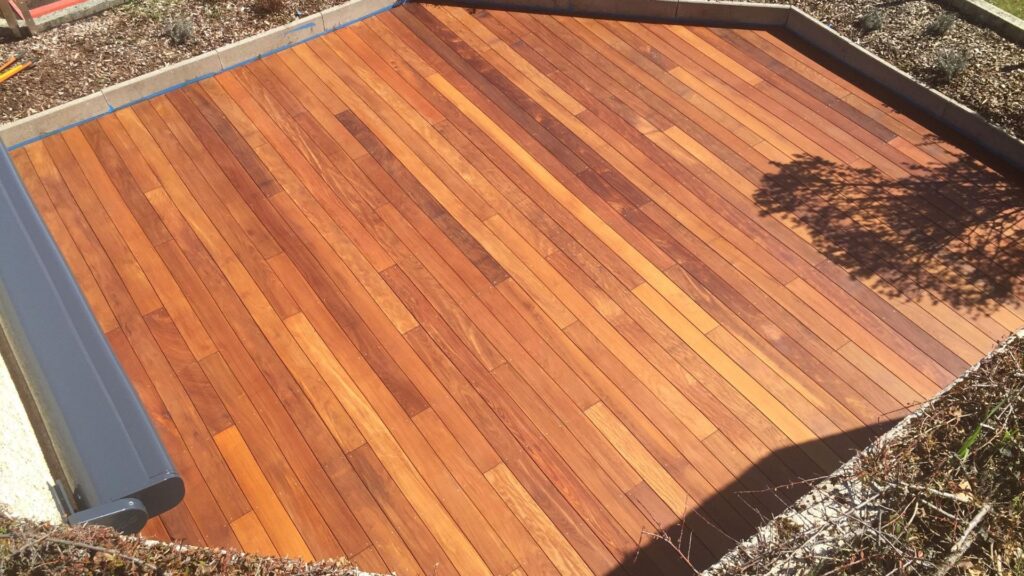
Installation And Maintenance Tips
Building and maintaining a deck in New Zealand’s unique climate requires careful planning and regular upkeep. Choosing the right techniques during installation and staying consistent with maintenance ensures your deck stays strong, safe, and beautiful for years.
Installation Tips
Proper spacing for airflow:
Leave small, even gaps between the decking boards during installation. These gaps allow air to circulate under the deck, preventing moisture build-up that can lead to rot, mold, or warping. Proper airflow also helps the timber adapt naturally to temperature changes, reducing the risk of cracks.
Using stainless steel screws for NZ conditions:
New Zealand’s weather, especially in coastal areas, can cause regular screws to rust or corrode over time. Stainless steel screws are resistant to moisture and salt exposure, ensuring a secure and long-lasting hold. They also help prevent staining around the screw holes, keeping the surface of your deck looking clean.
Maintenance Tips
Regular cleaning to prevent mold and stains:
Wash your deck every few months using a mild cleaning solution and a soft brush. This removes dirt, leaves, and organic debris that can trap moisture and lead to mold or staining. Regular cleaning also keeps the deck safe by preventing slippery surfaces.
Oiling or staining for durability:
Applying a quality oil or stain once a year protects your timber from UV damage and rain. Oils penetrate the wood to maintain its flexibility, while stains form a protective layer that helps prevent cracking, splitting, or fading. Choose products suitable for your timber type to achieve the best results.
Checking for wear and tear annually:
Inspect your deck at least once a year for loose boards, raised nails, or early signs of damage. Addressing these issues promptly can prevent accidents and extend the life of your deck. A quick check each season ensures your deck stays safe and well-maintained.
A well-installed and properly maintained deck can last decades, even in New Zealand’s demanding weather. By following these practical tips, you’ll protect your investment and keep your outdoor space looking great year after year.
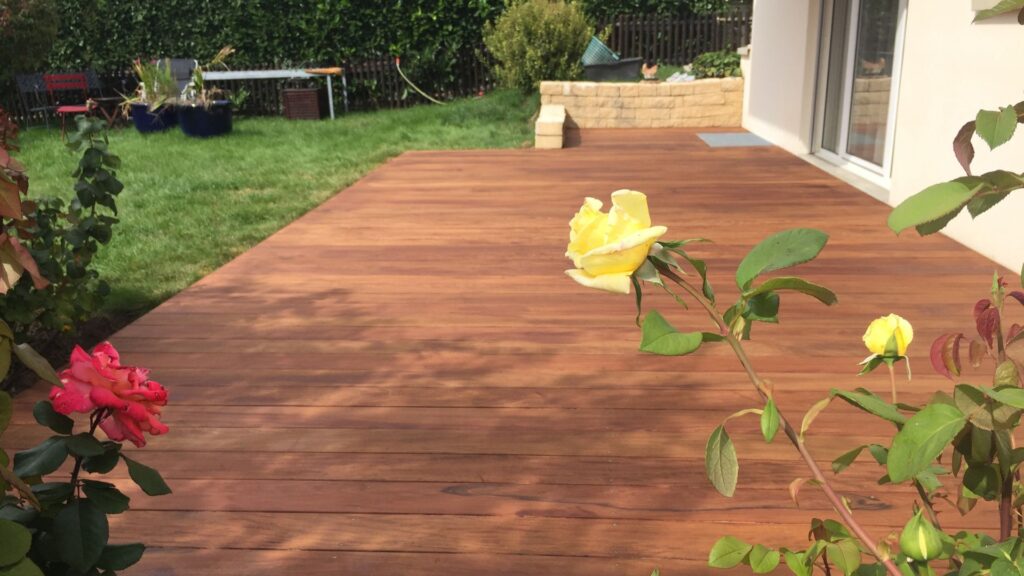
Sustainable And Legal Considerations
When planning a new deck in New Zealand, it’s important to think beyond appearance and cost. Choosing the right timber and following the law ensures your deck is safe, long-lasting, and environmentally responsible. Here’s what you need to know:
FSC-Certified Or Sustainable Sources
Using timber from sustainable sources helps protect forests while giving you quality materials. Look for decking timber that carries FSC (Forest Stewardship Council) certification. This label means the wood was harvested responsibly, supporting forest regeneration and protecting wildlife habitats. Many New Zealand suppliers now offer FSC-certified options for timbers like pine, kwila, and vitex.
If you prefer locally sourced timber, options like macrocarpa and some pine varieties come from sustainable New Zealand plantations. Choosing local wood reduces transportation emissions and supports the local economy while still giving you durable and attractive decking material.
Local Council Requirements And Building Codes In NZ
Every deck in New Zealand must meet local building codes to ensure safety and compliance. Before starting your project, check with your local council for permit requirements. For example, decks over 1.5 meters high usually need a building consent, and the materials used must meet durability and safety standards.
Using approved, treated timber is often required for structural parts of the deck to protect against rot and pests. Your council can also provide guidelines for railing heights, load capacity, and weather resistance, all of which help ensure your deck remains safe for everyday use.
By choosing sustainably sourced timber and following New Zealand’s building codes, you create a deck that’s safe, durable, and environmentally responsible. This approach not only benefits your home but also supports a healthier future for the planet.
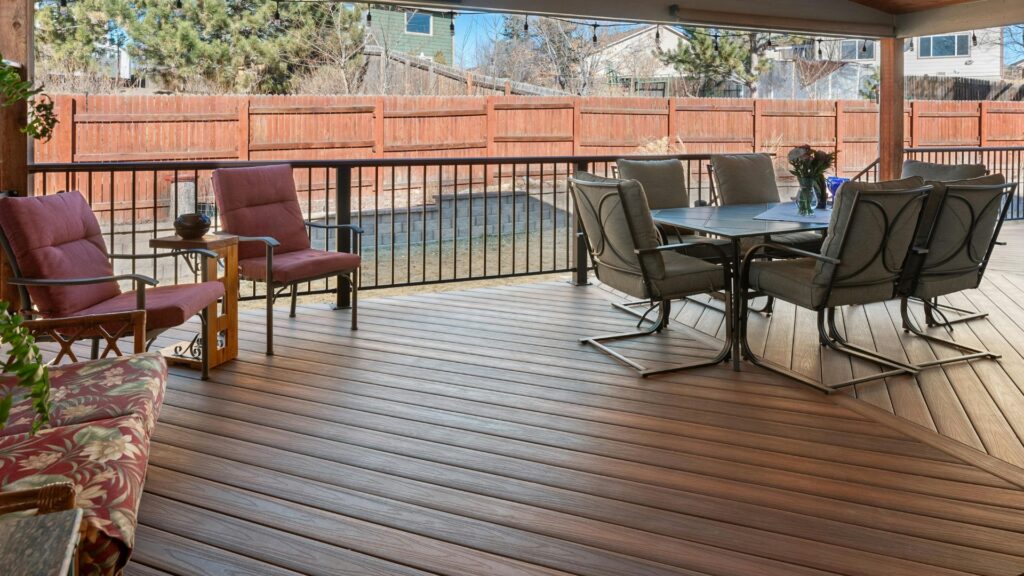
Where To Buy Decking Timber In NZ
Finding the right place to buy decking timber in NZ is just as important as choosing the right type of wood. Trusted suppliers not only provide quality products but also guide you in selecting the best timber for your project. Here’s what you need to know when sourcing decking timber for your home.
Trusted Suppliers In New Zealand
There are several well-known suppliers across the country that homeowners rely on:
- Mitre 10: Offers a wide range of treated pine, hardwood, and composite decking options, making it a convenient choice for most DIY or professional builds.
- Bunnings Warehouse: Known for competitive prices and accessibility, Bunnings stocks popular options like kwila and pine, along with accessories for installation.
- Specialty Timber Yards: Local timber yards often carry premium and sustainably sourced timbers such as vitex, macrocarpa, and other high-quality hardwoods. These suppliers are ideal if you want unique or eco-friendly options.
Tips For Comparing Prices And Quality
Before making a purchase, take the time to compare prices between different suppliers. While big-box stores might offer lower prices, specialty yards often provide better quality and expert advice. Check the timber grade, moisture levels, and whether the wood is kiln-dried or air-dried. High-quality timber may cost more upfront but lasts longer and requires less maintenance over time, saving you money in the long run.
Importance Of Warranties And After-Sales Support
When investing in decking timber, always ask about product warranties and after-sales support. A reliable supplier will offer guarantees on their timber, protecting you from defects or issues that arise after installation. Some suppliers also provide advice on proper installation and maintenance, which can help extend the life of your deck and maintain its appearance for years.
Choosing the right supplier ensures you get quality decking timber and support throughout your project. Take the time to compare options, ask the right questions, and invest in timber that will give your deck the durability and look you want.
Ready to start building your dream deck? Explore our expert decking solutions today and find the perfect timber to match your home and budget — visit our homepage to get started.
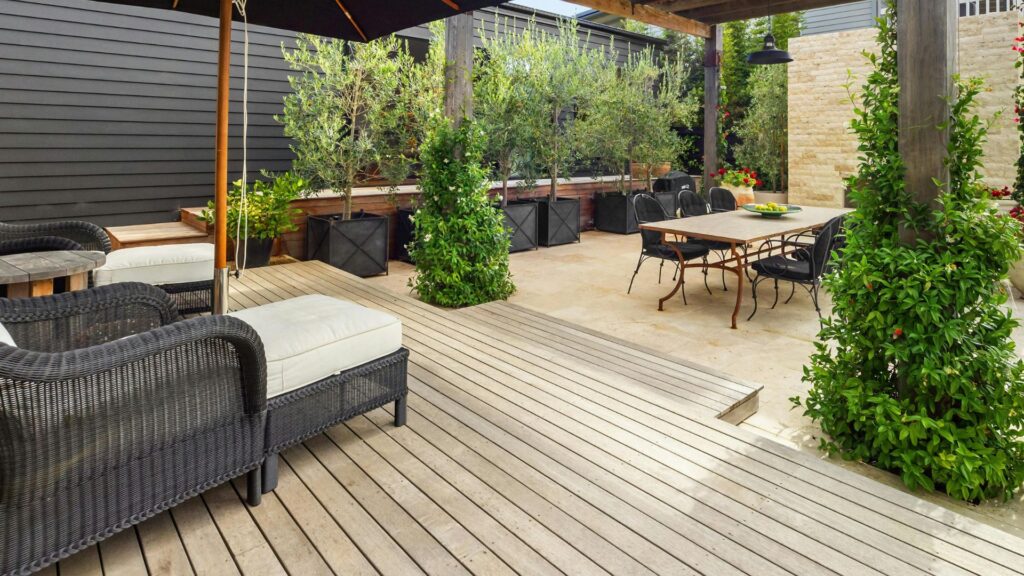
FAQs: About Best Decking Timber In NZ
What is the best decking timber in NZ?
The best timber depends on your needs. Pine is affordable and treated for durability, kwila offers a premium finish, vitex is a sustainable mid-range choice, and macrocarpa is chemical-free and eco-friendly.
How much does decking timber cost in NZ?
Prices vary by type. Pine is the most affordable, while kwila and vitex are more expensive. Expect to spend anywhere from $30 to $100+ per square meter depending on the timber and supplier.
How long does decking timber last?
With proper installation and regular maintenance, treated pine can last 15–20 years, while hardwoods like kwila and vitex can last 25 years or more.
What timber is best for coastal areas in NZ?
Kwila and vitex are great choices for coastal conditions because they are naturally durable and resistant to moisture, while treated pine is suitable if properly maintained.
Does decking timber need regular maintenance?
Yes. Most decking timbers need cleaning every few months and oiling or staining once a year to protect against weather damage and maintain their appearance.
Can I install a timber deck myself?
Yes, if you have the right tools and skills. However, for larger or more complex decks, hiring a professional ensures proper installation and longer lifespan.
What are the most eco-friendly decking timber options?
Macrocarpa and FSC-certified timbers like vitex are the most sustainable choices, as they are chemical-free or come from responsibly managed forests.
How do I prevent my deck from fading or cracking?
Apply a quality oil or stain every 12 months, clean the deck regularly to remove dirt and mold, and check for damage to prevent cracks or splinters.
Where can I buy decking timber in NZ?
Popular suppliers include Mitre 10, Bunnings, and specialty timber yards. Always compare prices, check quality grades, and ask about warranties.
Is composite decking better than timber in NZ?
Composite decking requires less maintenance and lasts longer, but it lacks the natural look and feel of real timber. The choice depends on your style, budget, and maintenance preference.
Conclusion
Choosing the right decking timber in NZ is more than just picking a material that looks good; it’s about finding an option that fits your lifestyle, budget, and the unique climate conditions of your area. The timber you choose will determine how durable, safe, and visually appealing your deck will be over the years. By planning carefully, you can avoid costly mistakes and create an outdoor space that you and your family will enjoy for decades. Take time to compare the different timber options, weigh their pros and cons, and think about the level of maintenance you are willing to commit to. For the best results, talk to local suppliers or decking experts who can guide you toward the most suitable timber for your specific needs. Start your project with confidence, knowing you are making informed choices that will add long-term value and enjoyment to your home.

